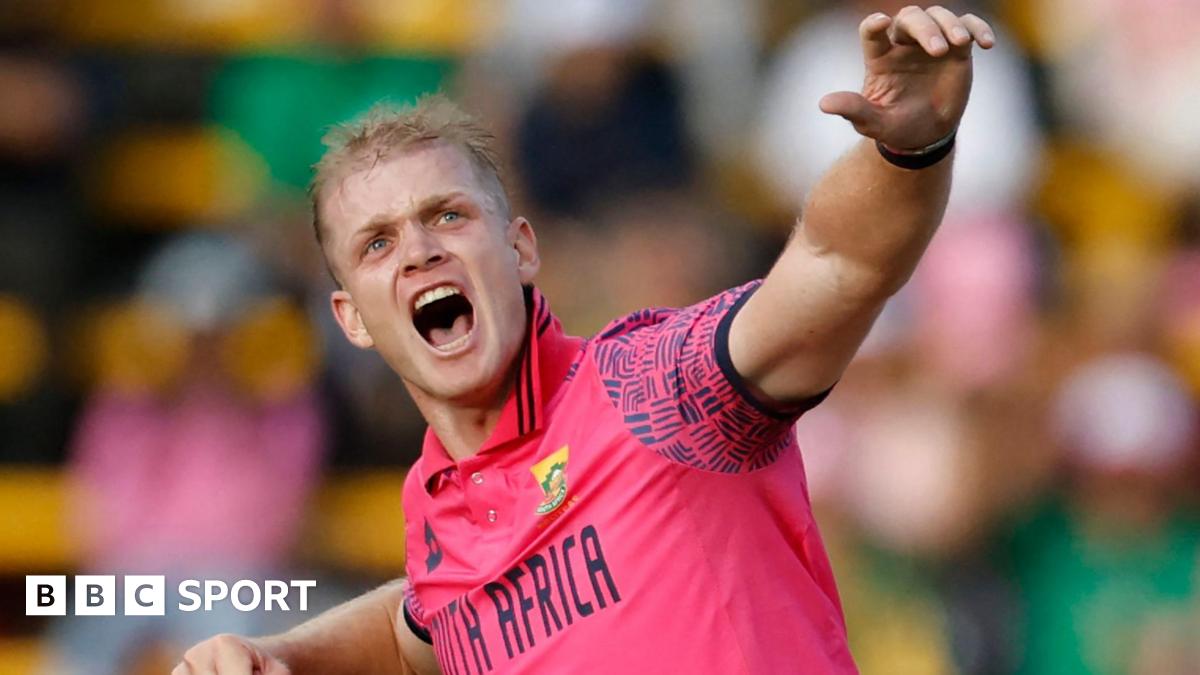Cricket battles to address its sustainability issues

COP29, the 29th UN annual conference on climate change, opened in Baku, Azerbaijan, on Nov. 11, providing another opportunity for international collaboration.
Last year’s event confirmed that international action to address climate change was way off track against target, and a focus of COP29 is how finance can be made available to developing countries to enable climate action. Achieving agreement is fraught with difficulty.
Given that there is such a gap between promises and action at national level, it should be little surprise that initiatives at a micro level have been piecemeal. In December 2018, the sports sector and the UN launched the Sports for Climate Action Framework. Its objective is to draw together sports organizations, teams, athletes and fans to raise awareness and develop actions to meet the UN goal of achieving climate neutrality by 2050.
The original signatories to the 2018 initiative numbered 17. Today, there are around 200. The list contains only six cricketing bodies — the England and Wales Cricket Board, Marylebone Cricket Club, Melbourne Cricket Club, Gloucestershire Cricket, Surrey Cricket and the Desert Vipers. The latter is one of six franchises in the UAE’s ILT 20 League and has sustainability at the core of its operations.
What also stands out from the current list is the presence of the national, international and world governing bodies of most other sports. Neither cricket’s governing body, the International Cricket Council, nor 11 of its 12 full-member boards are signatories.
The sports sector generates emissions in various ways, including travel, energy and water use, catering, equipment production, pitch preparation, venue construction and in-stadium activity. Cricket is no exception. Hence the lack of commitment by most of its leading bodies to the Sports for Climate Action Framework is disappointing. It appears to reflect a lack of concern about cricket’s contribution to climate issues. There are few obvious external signs amongst the game’s custodians that a coordinated effort is being orchestrated and encouraged.
In fact, there are strong counterviews. Evidence of these erupted in early 2023 following the announcement that Alinta Energy’s sponsorship of Australian cricket, worth $40m over four years, would end in June 2023. Australia’s men’s captain, Pat Cummins, was accused of influencing the decision because of his climate activism.
Cummins is the public face of Cricket for Climate, an organization working to help local clubs install solar panels. He has insisted his personal stance played no part in either Alinta’s or Cricket Australia’s decision. This did not stop vitriolic personal attacks against him, and he was called a “climate catastrophist clown” and accused of “incoherent far-left activism” on Sky News. The channel went further by suggesting: “Sporting bodies need to understand that it’s one thing to alienate sponsors, but they are also alienating fans.”
This is heady stuff. Cummins has dealt with the criticism with dignity, doubling down on his activism. He and his peers have reminded people of the extreme climate conditions which players endured during the ODI World Cup in India in November 2023. These included exceedingly high temperatures, off-the-scale air quality readings and heightened fatigue levels, each of which had adverse impacts.
In some quarters, the riposte is that the players are handsomely rewarded and should keep quiet about societal issues. This puts me in mind of Milton Friedman, the free-market economist, whose stance was that the business of business is business, allowing no room for social responsibility. Cricket is a creator of emissions and waste for which, arguably, it should take responsibility. It is also one of the most vulnerable sports to extreme climate variations. Setting aside apocalyptic visions of stadiums on fire, floods devasting stadiums beyond recovery and unbearable air quality causing death, there is evidence of adverse effects on the game.
One example is the flooding of grounds by rivers bursting their banks in successive years. Worcester is one example, with relocation under consideration. This is ironic, given estimates that an international cricket arena requires around 60,000 liters of water per day.
Cricket seems to react to disasters rather than having plans to prepare for them. It does not appear to be taking steps to anticipate or accept changing trends in weather patterns or putting strategies in place to cope with them. The ECB, to its credit, launched an Environmental Sustainability Plan in November 2023. This has three priority areas — tackling climate change, managing resources and waste, and protecting the natural environment. Some county cricket clubs have sustainability strategies in place.
Within the ECB’s overall plan is an aim to build a more circular economy to replace buy-use-dispose-buy. This applies to equipment and it is in this context that the Desert Vipers’ initiative is so relevant. Their playing kit for the 2025 ILT20 league is produced by a local UAE company, Palmfit, obviating the need for long distance transport and creating local employment opportunities.
The kit uses recycled materials, reducing the need for new ones and lowering carbon footprint by approximately 50 percent. Water-based inks are used, eliminating some harsh chemicals. The kits are printed-on-demand, so made only when needed.
Whether the Indian franchises will follow suit is unknown, but there have been some initiatives in the Indian Premier League. In 2023, Royal Challengers Bangalore wore jerseys made from recycled stadium waste in a match against Rajasthan Royals. However, even with schemes by other franchises, there is little evidence of a coordinated effort across the league.
Cricket is not only a potential victim of a mercurial climate; it is a contributor to environmental degradation. Despite being resource-heavy, it lags behind other sports in calculating its environmental impact, whilst development of sustainability plans is slow compared with other sports.
The reasons for this are not entirely clear but international leadership seems lacking. A balance needs to be achieved between the requirements of development, growth and environmental preservation.
Cricket’s leaders should not expect direction from COP29. They should generate it.
Related
‘Listen from one ear, ignore from the other’: Former India…
India's Rohit Sharma and Mohammed Shami (AP Photo) NEW DELHI: Former wicketkeeper-batter Syed Kirmani has expressed his opinion that experienced fast bowler Mo
India faces New Zealand in budding rivalry at Champions Trophy…
State AlabamaAlaskaArizonaArkansasCa
ICC and Unilever announce landmark partnership on International Women’s Day…
The two-year partnership, kicking off at this year’s Women’s Cricket World Cup in India and running until the end of 2027, marks the world cricket governing
IPL 2025: Mumbai Indians sign Corbin Bosch as replacement for…
Mumbai Indians have signed South Africa all-rounder Corbin Bosch as a replacement for his injured countryman Lizaad Williams for this year's Indian Premier Leag











